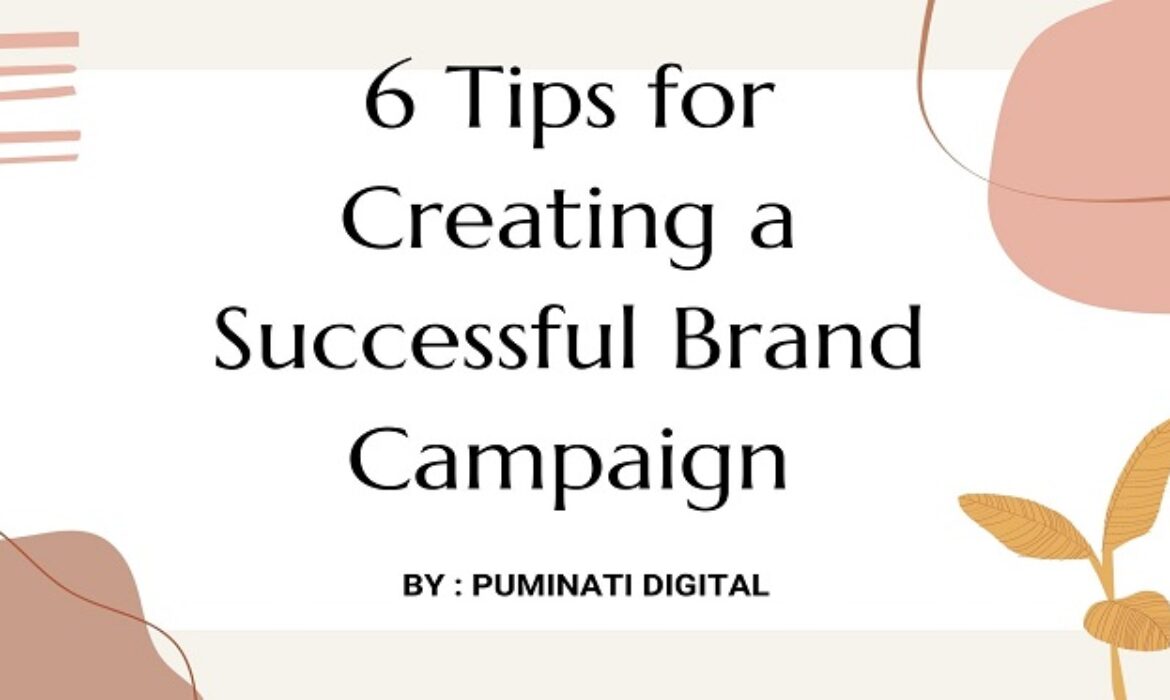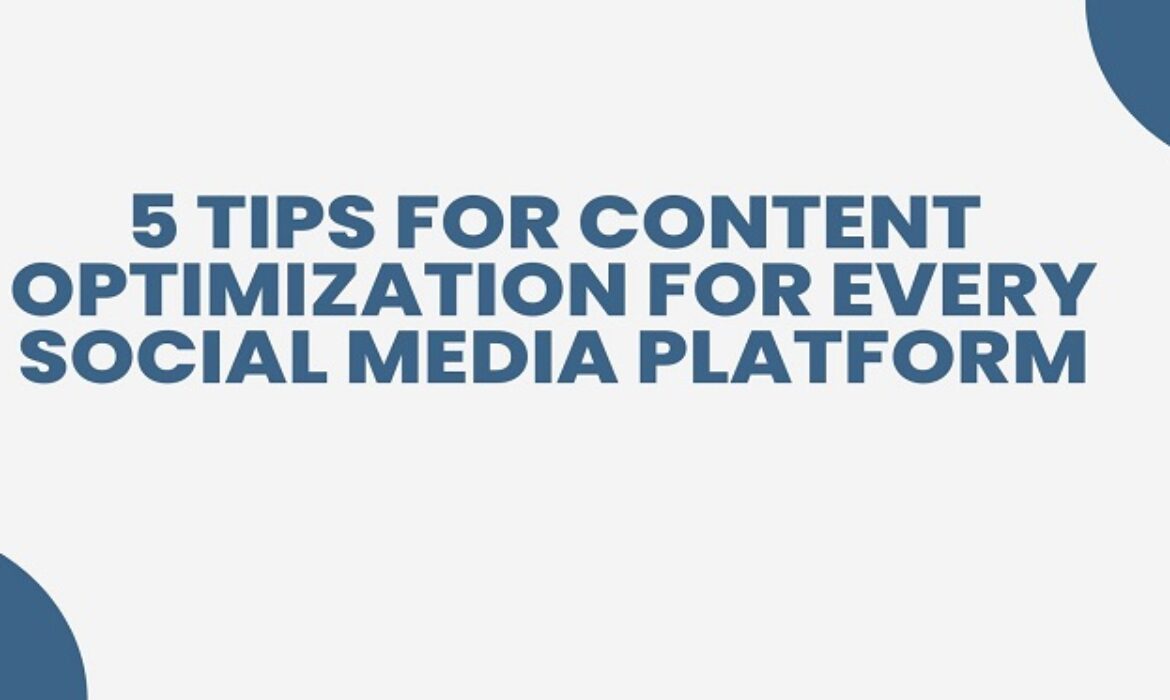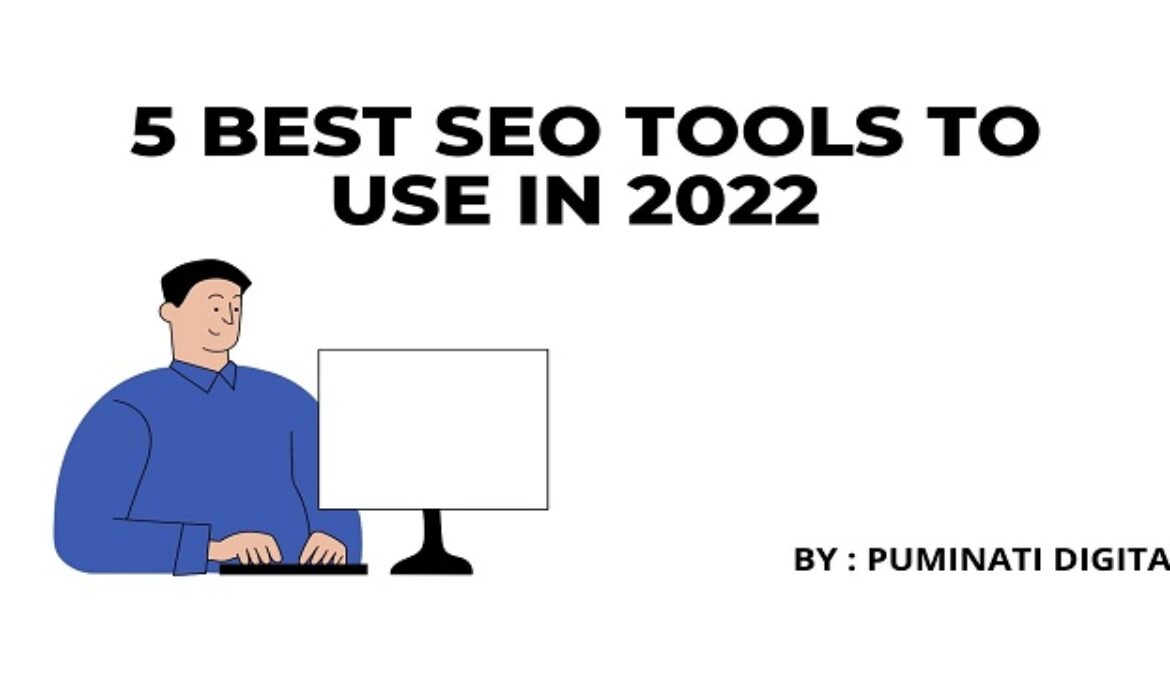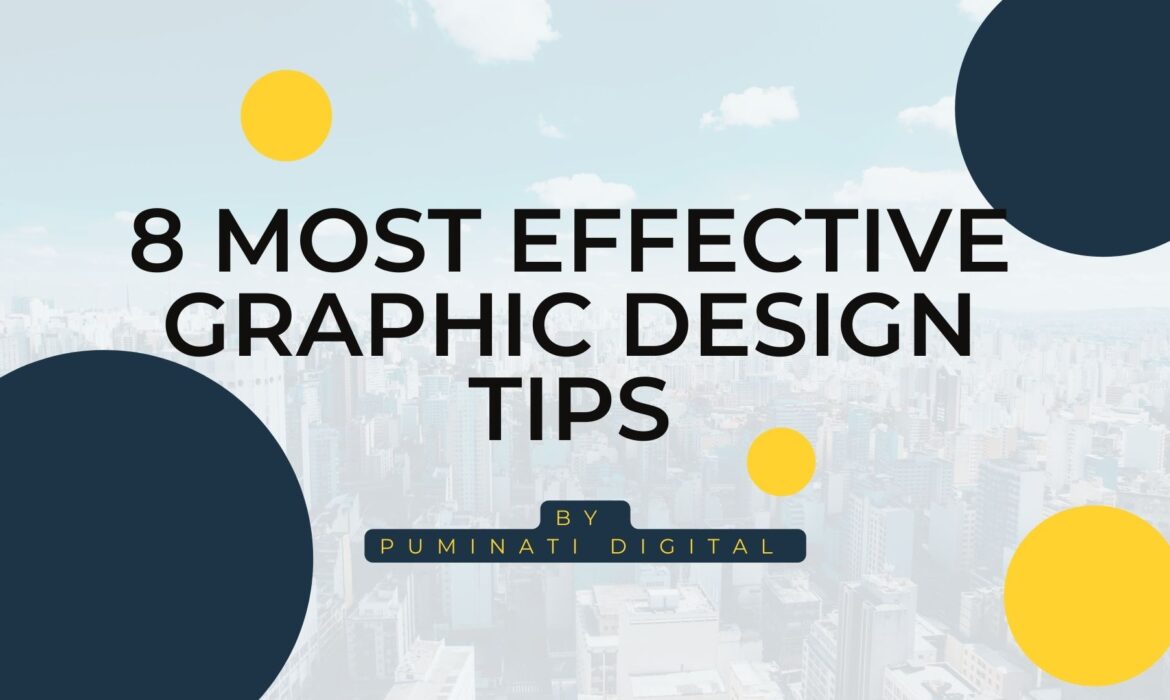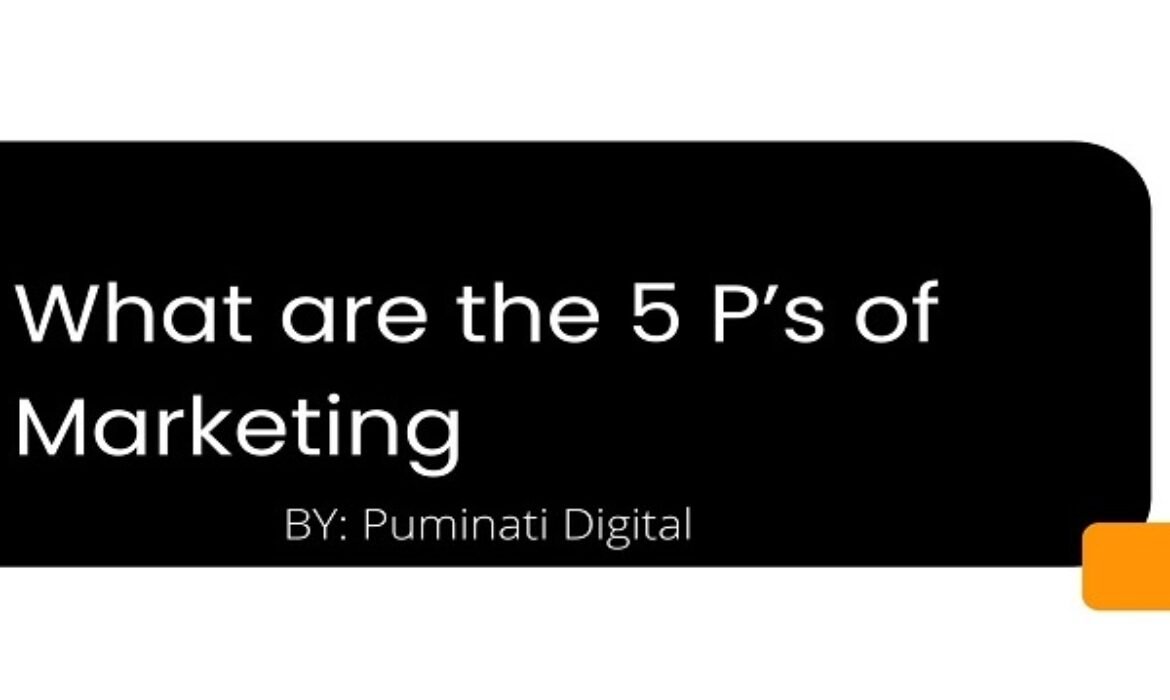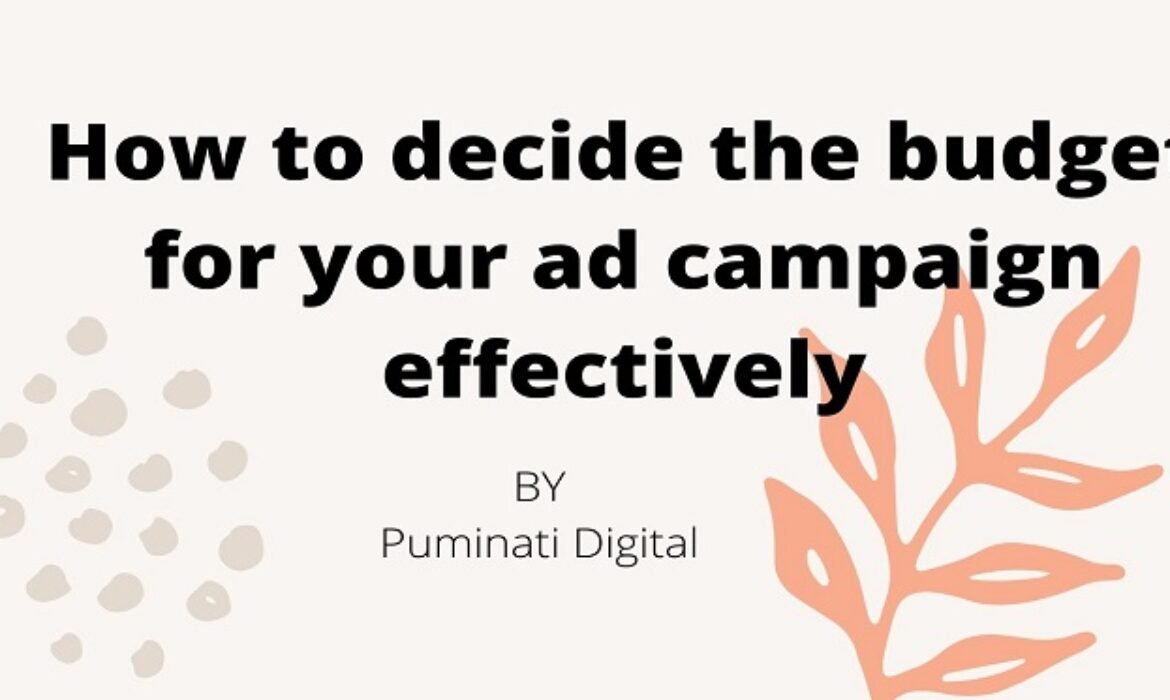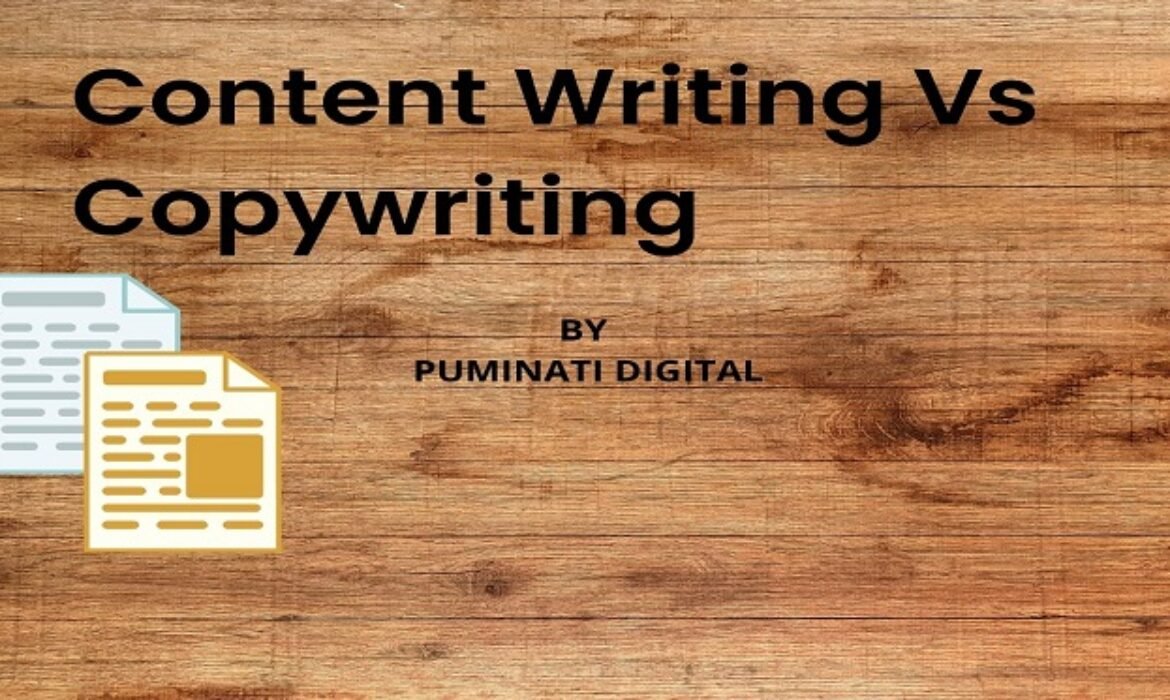Are Your Digital Marketing Skills Ready for Web 3.0 and Metaverse?

Time is running in an incalculable manner that has led us to watch so many changes in our life events. It seems like today when the internet has made its impression on us, and now the world is ready to face Web 3.0 and Metaverse. The trends keep on changing with what was in demand today will soon become obsolete tomorrow. This is how Digital Space works. Many of you must be thinking what’s next in Digital Marketing? Today we at Puminati Digital will be talking about the future of Digital Marketing. So, if you all are thinking of making a long and suitable career in the field of Digital Marketing for web 3.0, then get ready to upgrade yourself to a new and exciting Metaverse.
After Covid-19, trends in marketing have changed drastically and will continue to grow as our technology keeps on moving forward from time to time. Today, customers have a vast amount of information at their fingertips. Just by typing a few keywords, you can have in-depth knowledge on any subject you wish. With the users being dependent on the internet so much, it opens a wide space to market your products or services to the mass audience by providing them a solution to their problems. Social Media has been kind enough to the digital marketers and has played a major role in shifting the focus toward digital marketing from traditional marketing. But what’s next? What is Web 3.0? What is Metaverse? What is the next big step in Digital Marketing? and Are you working on your skills to survive the new wave of Digital Marketing?
Today, we at Puminati Digital will clear all your doubts and will talk about the next big thing in Digital Marketing. Are your digital marketing skills ready for web 3.0 and Metaverse?
What is WEB 3.0?
The world saw the start of Web 1.0 in the 1990s when the internet was just born. This version was quite simple in its term and founded the basics of Web 2.0 that we use today. Web 3.0 is the next generation of the internet that will change the way we interact with each other in the digital realm. It will be an upgraded version of the present self where each user will be the owner of their content and will also have more control over their digital identities.
Not only this, with Web 3.0, things will become more decentralized as the use of blockchain technology will increase, and people will have the ability to create their branches of the web using the same. Also, people will have more control over their data and will be able to use it as an asset.
What is Metaverse?
Metaverse is another word that has been trending nowadays. Metaverse if asked by anyone, would explain it as a digital space where people can experience the web while playing games and accessing apps and content in a three-dimensional space. Metaverse is supported by the concept of VR and AR, which was thought to be futuristic but is soon becoming a reality.
So, now that you know the new concepts, let us look at what digital marketing skills you need to succeed in the coming future.
1) Semantic Content Marketing
With Web 3.0, the internet will become more centralized, and the big players will no longer have a monopoly over the world wide web. Rather than developing value-driven content based on particular keywords or phrases, Web 3.0 will command brands and marketers to take a semantic approach to their content creation efforts. The semantic approach means developing targeted content based on an entire topic, with detailed, value-driven insights that match a user’s search intent completely.
Leveling up your content marketing skills to ensure your communications and ideas are based on offering precise insight and deep personal relevance will drive genuine engagement while improving your search engine rankings in the age of the metaverse.
2) Advanced User Experience
User experience (UX) has been a critical focus for digital marketers for some time now—and in a more immersive, less centralized age, digging deeper into your skillset will result in that all-important competitive edge.
Tomorrow’s websites, platforms, or online stores will need to be 100% interactive, user-friendly, and even three-dimensional (3D) to make it in the metaverse. To meet the new needs or expectations of consumers, developing your UX design and communication skills is essential.
By discovering innovative new ways to create a completely frictionless experience that brings a user closer to your brand, you will win on tomorrow’s commercial battlefield. And that’s why upskilling yourself in the field of UX is so important.
3) Immersive Marketing Techniques
Building on the previous point: as we move into a more interactive, immersive space, virtual reality
(VR) and augmented reality (AR) will become vital aspects of offering a valuable user experience. Getting to grips with immersive marketing techniques, tools, and platforms will prove essential in web 3.0 and the metaverse. Users will expect a 3D dimensional experience that, in a sense, bridges the gap between the physical and digital world.
Well-known gaming platforms that currently operate in this area are Minecraft, Roblox, Pokemon, and Fortnite, many of which are familiar to the freshest digitally native demographic of all—Generation Alpha. This type of innovation and these kinds of partnerships will become commonplace in tomorrow’s world, and as a marketer, it will become your duty to help make them a reality.
Conclusion
What do you think - Are Your Digital Marketing Skills Ready for Web 3.0 and Metaverse?
If not, then what are you waiting for? Grab the right skills and dive into the unending era of Digital Marketing. For more such interesting blogs on digital marketing, you can head on to our blog sections. To know more about us visit our website or contact us.
6 Tips for Creating a Successful Brand Campaign

You can establish your organization’s brand in the minds of consumers for centuries to come with the correct brand campaign. By developing a good core image for your brand, you may improve the likelihood that your product or service will come to mind when a consumer is ready to make a purchase choice.
A brand campaign puts your company’s narrative and message in front of a target audience to grow brand awareness and improve brand equity in the consumer’s mind. It is a method of controlling your brand’s story and public image, as well as differentiating your company from its competitors.
Today at Puminati Digital, we will give you 6 tips for creating a successful brand campaign.
What is the difference between a Brand and a Campaign?
Your brand is made up of everything that contributes to the identification of your company or product. Effective brands are easily identified by customers and rely on a consistent message throughout all marketing initiatives. A campaign, on the other hand, is a marketing endeavor that tries to promote a service or product. Campaigns normally appeal to a more specific demographic and are usually timely and limited in duration. As a result, when you mix the two, you get a brand campaign.
How to create a Brand Campaign?
When developing a brand campaign, there are a few crucial things to bear in mind, and they can vary based on the demands of your firm. Here are seven pointers for developing a successful brand campaign.
Money can’t replace Time
When you embark on a large-scale brand repositioning campaign, you know it will require a lot of effort to get your message through. One common blunder is attempting to speed change by investing excessively early in a campaign. Although communication frequency is important in generating change, message length is also important. Instead of squandering money by increasing frequency too quickly, invest it in developing a consistent message over time, allowing customers time to absorb your new posture.
Understand your Target Audience
One of the simplest ways to squander your ad budget is to fail to identify your target demographic. You won’t know how to develop a message that people will genuinely resonate with if you don’t know who you’re talking to. Create buyer personas to aid in decision-making throughout the campaign. This will help you to produce more customized messages that may be utilized effectively for a variety of audiences.
Make it easy for your consumers
Consumers cannot take numerous messages from a single advertisement. At best, people will remember the key message or call to action. However, don’t expect people to pick up on a secondary message or relate an abstract notion to your brand. Successful marketing campaigns make it simple for customers to learn about new products. Advertisers must help customers connect the dots.
Plan for Multiple Touch Points
Synergy is effective in promoting brand initiatives. Consumers who are exposed to many touchpoints and media types (e.g., television, print, internet, social, out-of-home) are more likely to be positively affected by your campaign. By spreading your investment over a few various media vehicles, you not only bring the message home to customers, but you also reduce the danger of saturation with any one media kind.
Think Efficiency Before Effectiveness!
It will take a lot of exposure for your campaign to impact a consumer’s view. Adequate frequency generation over time is a critical factor in marketing success. Before investing in high-profile sporting events or prime-time premieres, ensure that you have a consistent base of frequency-building media. Cable TV is an excellent medium for gaining exposure to a large number of people at a reasonable cost. Once the framework is in place, adding sports or high-impact prime can help you reach a bigger audience.
Set Clear Metrics for Success
The elements that determine whether or not a brand campaign was effective will differ among projects based on the organization’s main purpose. Furthermore, because the purpose of a brand campaign is often to raise awareness rather than produce revenue, the traditional marketing measurements and KPIs used by marketers may not be an appropriate indication of a campaign’s performance. That being said, it is vital that you track the outcomes of your efforts so that you can optimize your message and media channels in the future depending on the results.
Conclusion
So these were some of the major 6 tips for creating a successful brand campaign that we at Puminati Digital think is quite crucial. A brand campaign is your organization’s opportunity to build, or rebuild, its image in the mind of the consumer. Through these initiatives, your product or service can become not only a household name but the go-to product whenever your audience is ready to make a purchase. By keeping these tips in mind, you’ll be able to create an effective brand campaign that can be used to guide your overall marketing efforts for years to come.
5 Tips for Content Optimization for Every Social Media Platform
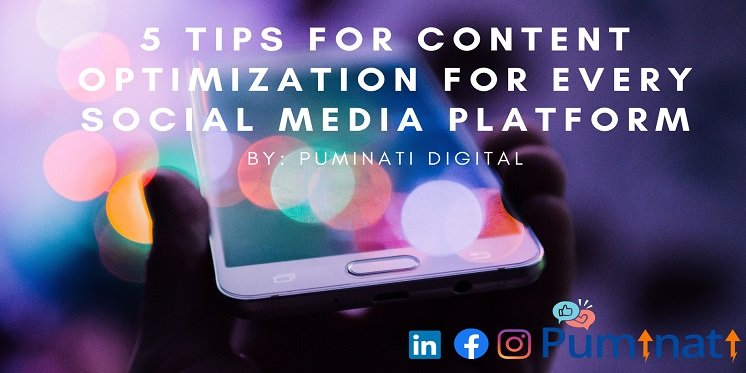
It may be simple to promote and advertise on social media, whether for social media shopping or to boost a political campaign. But, are your postings and campaigns effective? That is the tough part about social media marketing. What appears to you to be a brilliant and intriguing piece may not be appealing to your target audience.
A successful social media campaign is an art form. You must consider content genres, message, tone, and visuals. It would be best if you learned how to create marketing personas in order to capture the attention of the appropriate individuals on the right platform at the right moment. We’ll look at eight basic yet effective strategies to generate amazing content for every social platform in this article.
Today at Puminati Digital we will be telling you about 5 Tips for Content Optimization for Every Social Media Platform.
Upload Short Videos
We know that customers enjoy seeing mixed media in content, but the video has shown to be a fan favorite. Marketers that employ video in their marketing campaigns obtain 66% more qualified leads per year than those who do not. A brief video not only has a higher possibility of being eaten during a social media scan, but it also takes less time to make and upload and does not require the services of a professional.
Live video is available on Facebook, Twitter, Instagram, Twitch, and TikTok. Instagram, in particular, provides a wide range of video formats. Short videos are an excellent method to engage followers and track analytics linked to your video. After the live segment of the video concludes, it is still available for watching, ensuring that people linked to your profile do not miss it.
Create Interactive Social Content
To social media crawler bots, user engagement seems to be user favor. The more likes, shares, and comments your work receives, the better it looks. Creating shareable content that encourages consumers to participate and interact boosts ranking and increases brand loyalty.
Develop Emotion and Humour
Evoking emotion humanizes your business, whether it’s through a hilarious joke or a heartfelt video. This will be especially crucial in 2022 when customers will be looking for businesses that make a statement on social problems and demonstrate a commitment to core values. Companies who engage with their audience on a deeper level, even if it is simply with a goofy GIF or meme, are more likely to receive repeat comments, likes, and shares.
User-Generated Content (UGC) always works
User-Generated Content (UGC) refers to memes, images, videos, and even screengrabs created by other users. But why is this useful as a strategy for content optimization? It catches the creator’s or the creator’s followers’ attention and engages them. UGC also capitalizes on the popularity of something that has already been created and is well-liked. This saves you the time and effort you would have spent writing your catchy content. Furthermore, because UGC is not a replica of someone else’s work, it is unique to your brand. Just make sure that any information shared is suitable and that respect is given where it is due.
Respond to Social Comments
It may appear to be a simple tactic, but reaching out to consumers via comments is a proven method. Many businesses on social media sit back and wait for customers to come to them. This should never happen. Social media is becoming a customer service channel and an important tool to engage with prospects and answer their questions.
So, reach out, comment, like, and even post relevant stuff to your brand. When other customers see you communicating, it looks nice to them, and it improves the likelihood that you’ll receive comments of your own. Once you have regarded it as one of the owner’s things there comes a chance to meet the fresh comments.
Conclusion
If you just remember one thing from this post, make it that algorithms may help rather than hinder. Some social media users see algorithms as cords that bound us to precise rules, yet they can assist you in creating material with the potential to become viral. Learning the regulations for each platform is the key to beating the competition and rising to the top.
So these were the 5 Tips for Content Optimization for Every Social Media Platform. To read more about such exciting topics related to Digital Marketing you can check out our blog section. For more information about us, you can visit our website or contact us by clicking here.
5 BEST SEO TOOLS TO USE IN 2022
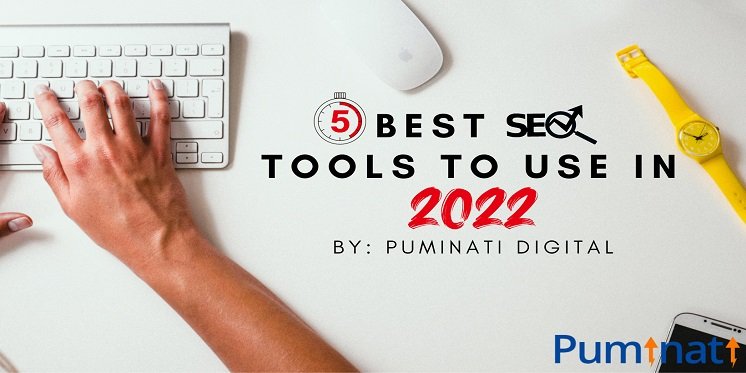
Mastering SEO optimization can be difficult, especially if you’re just getting started. Fortunately, finding the top SEO tools is simple; we’ve collected a list of them all. SEO solutions relieve you of the time-consuming task of keyword research and data analysis. You can assess what’s working and which portions of your approach need to be tweaked with SEO tools. The finest SEO tools will also give information on how you compare to rivals and where the most chances are. Furthermore, they enable you to track search success across nations, regions, or languages.
It will get better. If you manage many websites, SEO tools can let you analyze each site’s performance in real-time. Many entrepreneurs who run several websites wind up putting a lot of data into spreadsheets and manually evaluating it. However, this quickly becomes overwhelming, increasing the likelihood of false reporting. Fortunately, you can utilize SEO software to save hours and get precise results with the push of a button.
1. Ahref’s
Ahrefs is one of the most highly regarded SEO tools on the internet. When it comes to being the largest website crawler, it is just second to Google. Ahrefs’ Site Audit function is the greatest SEO analysis tool available, and SEO specialists can’t get enough of it. The tool identifies which portions of your website need to be improved to rank higher in search engines. In terms of competitor analysis, you’ll most likely utilize Ahrefs to discover your rival’s backlinks to use them as a starting point for your brand. This SEO tool may also locate the most related material in your field, verify and mend broken links on your website, and obtain an overview of your best-performing pages.
2. Google Search Console
Google Search Console, which is available for free to everyone with a website, allows you to monitor and report on your website’s visibility in Google SERPs. All you have to do is authenticate your website by adding a code to it or using Google Analytics, and then you can submit your sitemap for indexing. Although you do not need a Search Console account to appear in Google’s search results, you may use this account to manage what is indexed and how your website is shown. An SEO checker tool can assist you in understanding how Google and its users perceive your website, allowing you to improve for better performance in Google search results.
3. SEMRush
Marketing SEO tools like SEMRush are popular in the SEO community. Experts like how they make it simple to analyze your rankings and detect changes and new ranking chances. The Domain Vs. Domain comparison, which allows you to compare your website to your competitors instantly, is one of the most popular aspects of this SEO tool. You’ll be able to compare terms and domains if you’re seeking analytics reports to assist you in better understanding your website’s search data, traffic, or even competition. The On-Page SEO Checker tool allows you to monitor your rankings and get tips on enhancing the performance of your website.
4. KWFinder
An SEO keyword tool, such as KWFinder, can assist you in locating long-tail keywords with minimal competition. This SEO tool is used by specialists to locate the best keywords and to generate backlink and SERP analysis reports. Their Rank Tracker feature makes it simple to identify your rating while tracking your progress based on a single important criterion. If that isn’t enough, you’ll also receive a slew of additional keyword suggestions to help you rank your website even higher.
5. Moz Pro
Moz Pro, an SEO program, continues coming up as one of the experts’ top SEO tools. Some experts praised Moz for always being up to date, despite Google’s frequent algorithm adjustments. Others liked Moz’s chat platform, which gave them smart responses to every topic they asked. Moz is a full-service powerhouse, whether you need keyword advice or a site scan. You may learn a lot about how your website works and how to enhance it. You may also download a free MozBar toolbar to check your website’s stats while visiting any page. If you’re interested in learning more about SEO, you should also consider attending MozCon, their annual conference.
Conclusion
The top SEO tools on this list are worth their weight in gold. They provide insights that would otherwise take a long time to produce. That being stated, you will have to put in the effort to achieve the desired outcomes. This includes creating SEO-optimized content, revising all of your product descriptions, and implementing what you’ve learned from these SEO tools.
So, these were the 5 best SEO Tools to use in 2022 that we at Puminati Digital think are one of the best, and most SEO professionals prefer. If you are looking for digital marketing services for your business, Puminati Digital can help you find the right audience and convert your business into a brand. To know more about us, you can visit our website or contact us by clicking here. To read more interesting blogs, you can head to our blog section.
6 Rules of Effective UX Writing

UX writing as you know is the art of writing UI copy in such a manner that it guides the users on how to use the product and further interact with them. If you are still confused about UX writing then it includes the content on buttons, menu labels, error messages, security notes, terms and conditions, and any interactions that are necessary between the users and the digital product. The main role of UX Writing is to give the users an easy way to access the app or website by communicating with them shortly and crisply.
Today we at Puminati Digital will be talking about the 6 Rules of Effective UX Writing that are necessary for user engagement. Most often, developers think UX writing is for the second development phase. They think first they will design the product then they will hire a UX writer to write the text. This is not the right thinking as many issues can go unnoticed in the later stage. So, the best is to Write UI Texts side by side during the early process.
The professional UX writers work with a team of designers and developers who are responsible for crafting UI text. So, let us look at the 6 Rules of Effective UX Writing.
Be Concise and to the Point |Effective UX Writing
When writing a copy it is necessary to write short and to the point copy. When writing for websites and apps you have to be concise but it doesn’t mean limited. It should be efficient and easy to understand. Write a short sentence and do not use very heavy words. Every word that you use should have a meaning. Exclude all the unnecessary words. Here is an example below to which you can relate.
Don’t: You must log in before you can send a request.
Do: Log in to send a request
Avoid Long Block of Text
When a user is on digital media then he is not immersed in the UI texts. They just read it in one go. They just go through it so that they can move on to the next step. So the UI text you write should not be too lengthy. Give your users an interface that is very fast-paced be it through designing or writing. Always keep the most important text at first and edit all the other information in a short and precise way.
Begin with the objective
Always make it a point to show the objective at first. If a sentence describes an objective then make sure it is clear from the start. You must be thinking, are all of these really necessary? Definitely yes! Let us look at the example below to help make you understand.
Don’t: Tap on the button to see its properties
Do: To see the properties, tap the button
Make the copy consistent
Never make the copy inconsistent as it will create confusion among the users. For example, if you are using synonyms for words in different parts of the text then the whole UI copy would look inconsistent. Also, one more thing that you need to keep in mind is limiting the use of both the first and second person in the same phase.
Don’t: Change your picture in My Profile.
Do: Change your picture in Your Profile.
Avoid jargon
If you are writing a UI Copy then it should be simple and clear. Avoid using jargon words and technical terms that normal users won’t understand. Make use of familiar terms and phrases, especially in the error messages.
Don’t: System error (code #2234): An authentication error has occurred
Do: Sign-in error: You entered an incorrect password
Write in Active Voice and use Present Tense
Another thing that you need to understand is don’t use future tense. Always describe the action in the present tense. Also, limit the use of passive voice as it becomes a little boring for the readers. Let us know with the examples -
Limit the use of future tense-
Don’t: The photo has been downloaded
Do: Photo downloaded
Limit the use of Passive Voice-
Don’t: The Search button should be clicked when you are ready to search for an item.
Do: Click the Search button to search for an article.
Conclusion
So if you are interested in UX Writing you have to write in simple terms in a way that keeps the users engaged. Forget the heavy words and write as if you are helping your friend. So, these were the 6 Rules of Effective UX Writing that you need to keep in mind before making your copy stands out.
If you want to know more about Puminati Digital and its Digital Marketing Services then head over to our website. For more such interesting blogs you can check out our blog section.
8 Most Effective Graphic Design Tips

Graphic Designing is one of the best creative fields that is becoming quite popular these days. Graphic Designing is also a very lucrative job option for beginners who have a creative mind and have an interest in designing. But being a fluent graphic designer is not a one-month task instead the expertise comes from practice and experience. If you are looking to start a career in graphic designing then you should take proper advice from an expert designer. The better option would be to opt for an internship for 4-6 months as a graphic designer in any digital marketing or advertising agency. This way you will get a complete idea and learn the necessary skills that are required in this field. Today we at Puminati Digital will be talking about the 8 Most Effective Graphic Design Tips for beginners that will help you improve your designing skills.
8 Most Effective Graphic Design Tips
1. Select the Right Fonts
The importance of clarity in design and readability cannot be overstated. Make sure you are cautious to not limit your creations to a single typeface. In designing you should keep on experimenting with numerous font styles. You should also have a distinct font style for the particular project that you are dealing with. There are many fonts to choose from so instead of using the most basic fonts do wide research and select some fonts that you like and experiment with them.
2. Make your Colours pop up bright
You may use a color pop strategy to catch your viewer’s attention at first glance, especially if your content is brief and you want to make the most of it. High-contrast palettes such as yellow and white or black, red and black, and vibrant backdrop colors perform well. Check the coherence of your design as well, and strive to make the best impression possible. To select a pleasing palette for your design, you can also use the Adobe Colour CC online tool.
3. White Space is Strong and Worthy
White space is crucial in modern graphic designs that emphasize minimalism, with Apple being the finest example. When executing text on a large canvas, you should choose a high-quality typeface and then center your type, leaving the rest of the canvas white. By doing so the overall canvas would look awesome.
4. Select Consistent Images
Make certain that the image quality is constant throughout your design. The elements’ quality, frame, style, dimensions, and lighting should remain consistent throughout the design. The graphics, diagrams, photos, and drawings you utilize should perfectly complement the message of your project.
5. Scanning your Sketch
If you are drawing your design, make sure to scan it on your PC; utilize a smartphone camera to do so, and then upload the scanned sketch right into Illustrator or Photoshop. You may now proceed with your design as usual, but remember to keep the scan as a backdrop guide.
6. Flat Design goes a Long Way
Flat design has grown in popularity throughout the years as its aesthetic has evolved from slightly colorful to more classy. You should also have an excellent understanding of alignment and spacing when employing flat design approaches to get an amazing look.
7. Utilise Italics carefully
You should also employ italics in some of your projects for great effect. They should be used with caution since they can effectively balance your headers and subheaders. Italics should only be used in short phrases. Avoid them for extended phrases since they will ruin your effort.
8. Respect Page Balance
If you want to be a great graphic designer, you must study symmetry and balance all the time. Ensure that the balance is solid, as it has a significant influence on your design. The document you’re working on should be evenly loaded on the left and right, or, in certain cases, upwards and downwards.
Conclusion
So, these are the 8 Most Effective Graphic Design Tips for beginners that will help you improve your designing skills. All in all, you have to keep in mind that the overall design looks appealing to the client. Also, you have to keep practicing and learn a lot of software. If you are working in an agency then you might not work in a fast-paced environment. So you have to be creative and at the same time work on ideas quickly. Following the above steps, you are surely on your way to becoming a great designer.
To know more about Puminati Digital head on to our website or contact us. To read more interesting blogs about digital marketing do check our blog section.
Facts about Duplicate Content

Hello Again! We at Puminati Digital are back again to discuss more on Duplicate Content. In the last blog post, we talked about the myths that revolve around Duplicate Content. In this blog post, we would be talking about some facts about Duplicate Content. Those who have missed the previous blog on the Myths About Duplicate Content please do read it once. For those of you who are here just for the facts and to know about Duplicate Content, we will summarise it for you guys.
What is Duplicate Content?
Duplicate content is material that exists in more than one location on the Internet. That “one place” is defined as a location having a unique internet address (URL); hence, if the same material occurs at more than one web address, it is considered duplicate content.
While duplicate material is not strictly a penalty, it can nonetheless have an influence on search engine results. When there are many instances of “appreciably similar” information in different locations on the Internet, search engines may struggle to determine which version is more relevant to a particular search query.
Now that you know what Duplicate Content is let us know some facts about duplicate content
Facts About Duplicate Content
Use 301 Redirects to Avoid Duplicate Content Penalties
According to a SEMrush analysis, 8.58 percent of all websites have redirect loops, therefore you must exercise caution while employing this method.
Reduce the amount of duplicate material by redirecting an old or obsolete URL to the new version. This is useful in the following situations.
- You just changed the domain name of your website.
- You’re attempting to redirect obsolete URLs after combining two websites.
- You have many URLs for your homepage and want to select one as the “canonical” one.
- You erased a page after modifying your website.
301 redirects are a simple technique to get rid of annoying duplicate material on your website.
Duplicate Content Impacts Link Equity
The term “link equity” refers to how specific links transfer authority and value from one website to another. Here’s why duplicating content is a concern if you’re seeking to earn link equity.
Because search engines do not want to display many sites with the same material, they must determine which page is the best fit. Every duplicate page diminishes visibility, reducing your link exposure. Links are important. According to Backlinko, the first Google result has 3.8 times more links than the second through tenth places.
Google suggests reducing boilerplate repetition
When we talk about “boilerplate” information, we generally mean things like copyright notices or legal disclaimers. Google may regard these standardized chunks of text to be duplicated if they exist in the main body of content.
Google has policies in place to combat such boilerplate assertions. If you utilize disclaimers, for example, you might create extremely brief legal disclaimers for each post and offer a link to a comprehensive legal policy.
One of the Best Ways to Avoid Duplicate Content Is Understanding Your CMS
Your content management system (CMS) may be producing content duplicates that you are unaware of. For example, there a single article may appear on a homepage and under a search category. How do you go about resolving this? Understanding the intricacies of your CMS. You have a few possibilities after you’ve learned how to recognize similar material.
Wherever possible, include the canonical tag. Alternatively, you may use the “Noindex” element to prevent Google from indexing the page (especially helpful for printer-friendly pages). Alternatively, you may rewrite information, even if only slightly, to keep it unique.
Conclusion-
Contrary to popular belief, duplicating material isn’t a major issue unless it’s used maliciously. Google will not penalize you with a bad search score simply because it encounters duplicate content on occasion. Having said that, it’s still worthwhile to discover and remove duplicate information. Avoid boilerplate repeats, utilize 301 redirects wherever feasible, and check to see if your CMS is producing duplicate material unnecessarily. So, these were some facts about Duplicate Content that you should know about. To know more about Puminati Digital you can visit our website or contact us. To read more interesting blogs you can head over to our blog section.
What are the 5 P’s of Marketing?

If you are in the field of marketing or you have a business and know about the role marketing plays in increasing the business. Then you must have also heard about the 5 p’s of marketing. It is alright if you don’t know about it because then why would you be reading this blog anyway? And why would we be writing about it if everyone knew about the 5 effective and the oldest marketing tools? So, what are the 5 Ps of Marketing? We want you to think of the 5 names starting with P until we finally reveal them. So, if you combine the 5 P’s you get an extraordinary marketing mix that can help you plan and strategize effective marketing plans for your business. Okay, so what else?
By combining the 5 tools you are able to focus on the different areas of your business that you think need to be improved or enhanced. It helps you to target the right market and focus on the right audience. Also, by doing so you add value to your product or service that makes you different from your competitors.
So, were you able to find those 5 Magical letters starting with P? If you couldn’t give us a chance to inform you. All you have to do is keep on reading. So, when we are talking about marketing you need to mainly focus on the main 5 areas which are - Product, Price, Promotion, Place, and People. These 5 P’s play an important role in controlling the internal and external marketing environments.
Today, we at Puminati Digital are going to explain in detail the 5 P’s of Marketing.
Product
Product and service is the first thing that every customer focuses on. You need to ask yourself what you are providing to your customers and will they buy it? There are many factors that you need to consider when developing a product like its functionality, branding, packaging, service, quality, appearance, and warranty.
Take into account all the primary needs and desires of the customers and accordingly develop the primary features of your product. For example - if you are running a food company then you can offer different interesting flavors and recipes that will broaden your product’s line.
Price
You have decided on your product and services so now you have to take into consideration its price. To decide the price you have to look into everything that will make up your product’s overall cost. The overall cost includes all the advertised rates, discounts, credit terms, sales, and any other payment arrangements.
Your pricing will also be determined by your company’s market position; for example, if you advertise your company as a low-cost automobile rental service, your pricing should reflect that. Alternatively, if you are a luxury food product, your price should be more than lower-grade products to reflect the better packaging and ingredient quality you provide.
Promotion
All of the activities and strategies you employ to sell your products/services to your target market are referred to as promotion. Sales, public relations, direct marketing, advertising, sponsorship, and social media are all part of this.
Because promotion expenditures might be significant, it’s a good idea to do a return on investment analysis (ROI) before making a decision. To begin, figure out who your target market is, what media they consume, how much that media will cost, how many extra sales you’ll need to pay your investment, and how you’ll collect data to prove how well the promotion performed.
Place
The place element describes how you deliver your product or service to customers at the appropriate time, in the right place, and in the right amount. Distribution routes location, logistics, service standards, and market coverage are all factors to consider.
If you want to increase your company, you should think about modifying or extending the method by marketing your products and services. If you’re a homewares distributor, for example, you might consider establishing a website.
People
The people element refers to your clients, yourself, and your staff. If you want to expand your firm, you must consider both your employees and your customers. It entails determining what your consumers want and need, defining goals, and tracking your customer service levels in order to attract and retain loyal customers.
You’ll also want to think about staff training so that they can provide the best possible service and meet customer expectations.
Conclusion
The 5 Ps are a set of guidelines to follow while planning your marketing strategy. It’s something you may refer to if you’re stuck or need to think about the box. It helps both experienced marketers and rookie marketers or business owners outline their strategies in this way. As the world changes, the marketing mix evolves, and additional P’s can be standardized in the future.
So, these were the 5 P’s of Marketing that should be considered while planning your marketing strategies. To know more about Puminati Digital visit our website. For more such interesting blogs head on to our blog section.
How to Decide the Budget for Your Ad Campaign Effectively
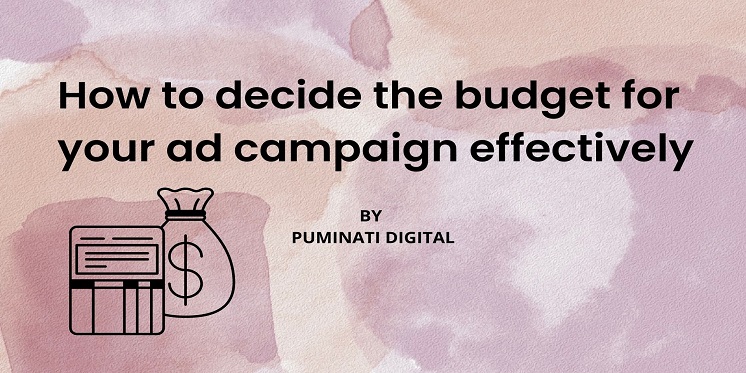
With the growing digital space, everyone is on the run to promote their business online. Currently, it is the most effective way to interact with users. From younger age groups to senior citizens you will find people of all age groups on different platforms of social media. Don’t you think how big this opportunity is where you can easily promote your business with organic reach and paid campaigns? You can also save a lot of money if we compare it with traditional marketing. So, are you looking to promote your business effectively? Are you planning to begin new ad campaigns but aren’t sure where to start with your budgets? To get you off on the right foot, we’ll walk you through the decision-making process here. We will tell you everything about the Ad Campaign process and how you can decide the budget for the same.
Puminati Digital is one of the best digital marketing agencies in Uttarakhand, India that is moving forward while helping out many businesses to improve their online presence. Today we will be talking about how to decide the budget for your Ad Campaign Effectively on various online networks. First, let us start with How Ad Campaigns work?
How Campaign Budgets Work
Let us give you an overview of the whole project. Budgets are determined accordingly in keeping the campaign level in mind. It’s your call how much you will be spending on digital advertising and what will be the time duration of the campaign. Campaign budgets are usually measured by days across several social media platforms. There are some networks such as Bing Ads and Google Ads that offer long-duration monthly and lifetime budgets.
If you are running Ads on Google AdWords you have to take into account an extra 20% of your daily budget. They do this in order to compensate for variations in search volume that can happen on any day. The catch here is that AdWords will prevent you from going over your budget if you run a monthly campaign and will also credit you if the monthly spending exceeds. When starting a campaign remember that you won’t get instant results so set a budget that helps you to get started. All you need to do is experiment to get the best results.
How To Choose Your Campaign Budget?
Now, that you know what Ad Campaigns are, you must be thinking about how to run ad campaigns while choosing the right budget. Follow these three steps and you are good to go.
- First of all, calculate your overall daily budget. To find it what you need to do is divide the total monthly budget you have decided for advertising by 30.4.
- Now, find out the daily initial campaign budget by dividing the overall daily budget by the total no. of campaigns you will be running across different networks.
- Lastly, by applying the daily budget to each of the campaigns you are launching.
Reallocating Budget
The best thing about Digital Ad Campaigns is that you manually control and reallocate your budget by collecting the data of incoming traffic. In a week or few days, you will know what are the most profitable campaigns that are running successfully. You can anytime move money out of campaigns that are not performing well and reallocate the budget to the best-performing campaigns.
Conclusion
So, this is how you can effectively decide the budget for your Ad Campaign Effectively. Ad budgets of any size can make a difference in helping your company achieve its objectives. Simply be wise about your ad spending and use these strategies to plan ahead of time, then test and tweak your ads to get the most out of your online marketing investment. To know more about Puminati Digital and our services head to our website or you can contact us. For more such interesting blogs head to our blog section.
Content Writing Vs Copywriting

In today’s world, brands have shifted to a different concept of creative marketing strategies, i.e., Storytelling. This is the art of using words and actions to develop the background of the story while encouraging the audience’s imagination. it creates a background story for a brand that helps evoke emotions and awareness among the people. Storytelling is the best tool to gain people’s trust, inspire them, and make them believe in your mission.
Before you start selling a product you need to first gain the trust of the people. To do that storytelling will play an important role in building their trust. It is a two-way process and the customers need to know that you are helping them and not just selling them your products. Copywriters and Content-writers are both responsible for creating content but their roles still differ from each other. However, they both play an important role in building customer connections.
If you are a writer or you run an agency it is very important for you to know about the difference between Content Writing Vs Copywriting and how both can help you in increasing your business. Below are the 7 differences and comparisons between Content Writing Vs Copywriting.
A copywriter sells and a content writer informs
A copywriter considering a target audience writes accordingly to sell the product to that audience. A content writer writes content to educate, inform, instruct, or entertain readers. Copywriting is mainly related to sales, it can be said as an art of salesman in print. Its main purpose is to persuade people and make them believe your brand will fulfill their needs. Content-writing does all other works like it attracts audiences, solves their problems, and making a way for customers so they can make a purchase.
A copywriter creates a sense of urgency
A copywriter writes content that urges viewers to take action immediate action like they will want readers to sign up for a website, make them buy products, or simply make them download something. So, it is important for copywriters to create crisp and short content that is pleasing to the eyes and at the same time answers the ‘why’ questions of the audience. The content writers work on building and engaging the audience by providing needed information to the audience and at the same time indirectly promoting the brand.
Content Writers usually focus on the SEO
The base of content writing is Search Engine Optimisation practices. Content writers create content on the most trendy topics that the users are generally interested in. With the help of certain tools, they will research some popular keywords and accordingly write their articles or blogs. The headings, paragraphs, meta titles, and images are all inserted with keywords so that the content would rank better in the search engines. It is not necessary for copywriters to follow SEO practices, although if there are keywords present in the Ad copies it will definitely help the Ad post to rank higher and get noticed by the readers.
Copywriters write short copies while Content Writers write long content
Copywriters generally write short-length content such as online and offline Ads, taglines, slogans, Web page content, E-mail campaigns, Tv or radio commercials, video scripts, catalogs, Billboards, Postcards, jingle lyrics, etc.
Content writers on the other hand write long-form content such as Articles, blog posts, news articles, press releases, magazine articles, E-mail newsletters, E-books, books, film and television scripts, podcasts, etc.
The content writer plans a long-term strategy.
A copywriter can create Ad copies and you can tell whether it was a success or not with the help of metrics that tells you how frequently the Ad was opened. The same is not the case with content writing. Content writing is a long process and it takes a lot of time for good content to pay off. If the content is good it will rank better in the google search which will bring in more audience for a longer period of time, unlike Ad copies and advertisements. For example - An Ad or email will fade away with time but the users searching on the internet will find the blogs and articles until it is removed from the website.
The content writer drives traffic and the copywriter turns them into leads.
This last point makes the difference very clear between content writing and copywriting. Content writing plays a major role in generating traffic by writing informative and entertaining blogs and articles. Whereas, Copywriting turns those traffic into leads by making interesting and eyecatching Ad copies. So, the final verdict is that good SEO content is good for driving traffic and sales copies are good for sales.
Conclusion-
Content writer and copywriter are the two most important job titles that are associated with digital marketing agencies. There is a popular saying that we digital marketers often come upon ‘Content Is King’. Creative Marketing strategies totally depend on Content and without Content Writers and Copywriters it is not possible to achieve the set marketing goals.
So, we at Puminati Digital think that you have got a clear idea about what content writers and copywriters do. Now, if you are thinking about joining a digital agency as a writer then what according to you will be your choice of profession - Content Writer or Copywriter?



